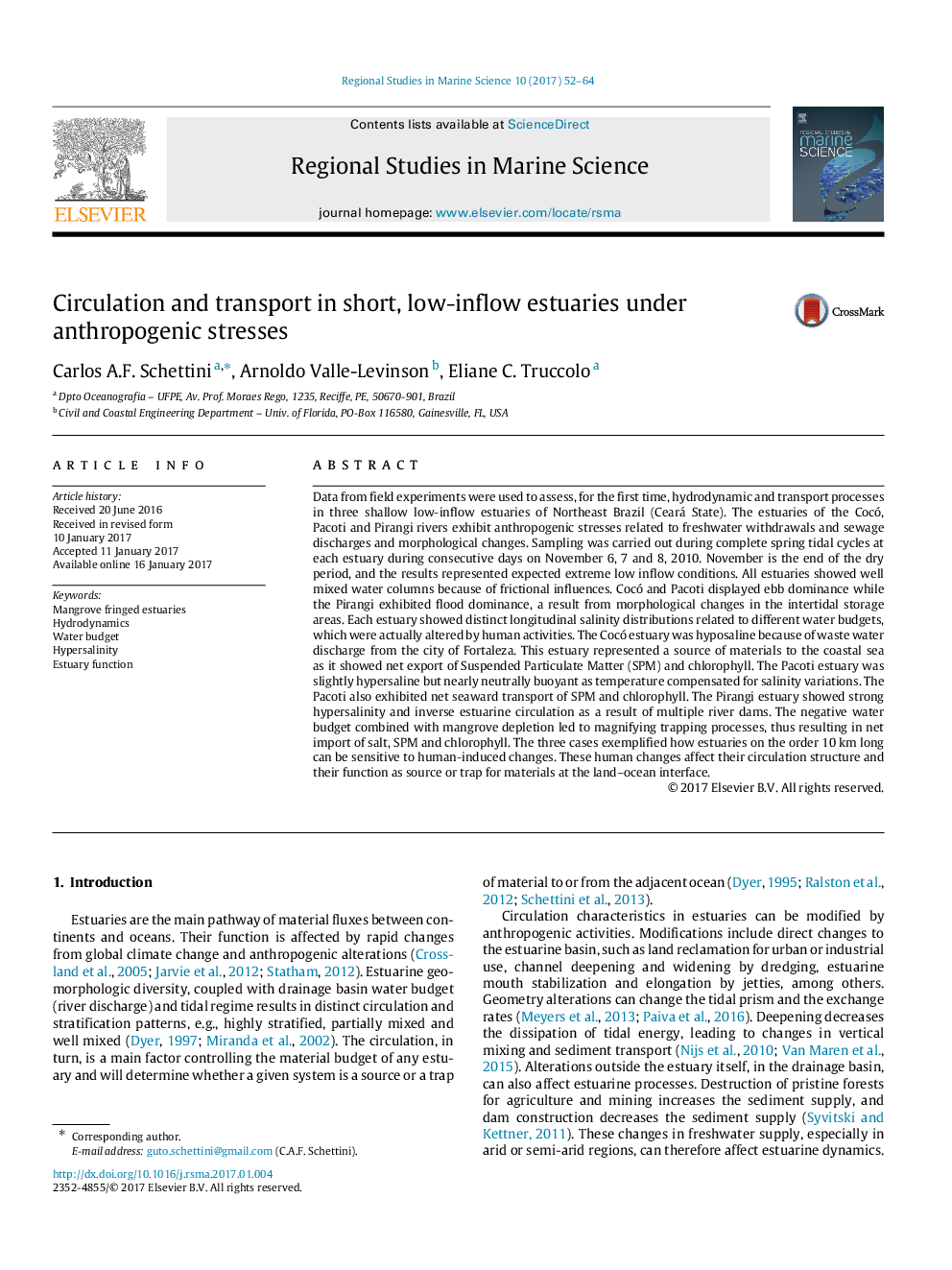| کد مقاله | کد نشریه | سال انتشار | مقاله انگلیسی | نسخه تمام متن |
|---|---|---|---|---|
| 5758087 | 1622818 | 2017 | 13 صفحه PDF | دانلود رایگان |
عنوان انگلیسی مقاله ISI
Circulation and transport in short, low-inflow estuaries under anthropogenic stresses
ترجمه فارسی عنوان
گردش و حمل و نقل در کوتاه مدت، استوایی های کم جریان تحت تنش های انسانی
دانلود مقاله + سفارش ترجمه
دانلود مقاله ISI انگلیسی
رایگان برای ایرانیان
کلمات کلیدی
فاضلاب های حاشیه ای سرازیر شده، هیدرودینامیک، بودجه آب، بیش از حد، عملکرد صخره،
موضوعات مرتبط
مهندسی و علوم پایه
علوم زمین و سیارات
اقیانوس شناسی
چکیده انگلیسی
Data from field experiments were used to assess, for the first time, hydrodynamic and transport processes in three shallow low-inflow estuaries of Northeast Brazil (Ceará State). The estuaries of the Cocó, Pacoti and Pirangi rivers exhibit anthropogenic stresses related to freshwater withdrawals and sewage discharges and morphological changes. Sampling was carried out during complete spring tidal cycles at each estuary during consecutive days on November 6, 7 and 8, 2010. November is the end of the dry period, and the results represented expected extreme low inflow conditions. All estuaries showed well mixed water columns because of frictional influences. Cocó and Pacoti displayed ebb dominance while the Pirangi exhibited flood dominance, a result from morphological changes in the intertidal storage areas. Each estuary showed distinct longitudinal salinity distributions related to different water budgets, which were actually altered by human activities. The Cocó estuary was hyposaline because of waste water discharge from the city of Fortaleza. This estuary represented a source of materials to the coastal sea as it showed net export of Suspended Particulate Matter (SPM) and chlorophyll. The Pacoti estuary was slightly hypersaline but nearly neutrally buoyant as temperature compensated for salinity variations. The Pacoti also exhibited net seaward transport of SPM and chlorophyll. The Pirangi estuary showed strong hypersalinity and inverse estuarine circulation as a result of multiple river dams. The negative water budget combined with mangrove depletion led to magnifying trapping processes, thus resulting in net import of salt, SPM and chlorophyll. The three cases exemplified how estuaries on the order 10 km long can be sensitive to human-induced changes. These human changes affect their circulation structure and their function as source or trap for materials at the land-ocean interface.
ناشر
Database: Elsevier - ScienceDirect (ساینس دایرکت)
Journal: Regional Studies in Marine Science - Volume 10, February 2017, Pages 52-64
Journal: Regional Studies in Marine Science - Volume 10, February 2017, Pages 52-64
نویسندگان
Carlos A.F. Schettini, Arnoldo Valle-Levinson, Eliane C. Truccolo,
